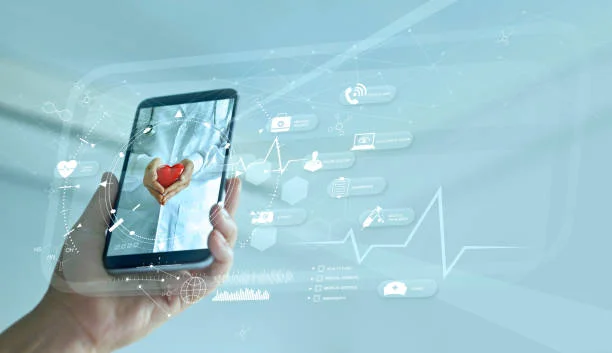What is Artificial Intelligence and How Does AI Works?

You may have heard a lot about artificial intelligence. Even if you are not currently using it, we are confident that you have interacted with artificial intelligence a minimum of once in the previous 5 minutes.
That’s because AI has grown so prevalent that the instances we see everyday appear to be endless. So, this article will tell you what is artificial intelligence with examples, and how it works to understand it easily.
What is Al?
Artificial intelligence (AI) is the computerization of human intelligence.It allows them to do activities that would normally need human intelligence.
Learning, thinking, problem-solving, perception, language comprehension, and decision-making are examples of these tasks. AI systems are built to analyze and process massive volumes of data and adapt to changing environments. Eventually increasing their performance over time.
Read More Blogs: Tech Bulletin
How does it work?
AI works by combining data, algorithms, and processing power. Here’s a short explanation of how AI works:
- Data Collection:
To learn and make educated judgments, AI systems require data. This information may be organized (numbers and text) or unstructured (pictures and audio). The better the AI can learn, the more relevant and diversified the data.
- Data Preprocessing:
Before being fed into AI algorithms, raw data is frequently cleaned, transformed, and organized. This preparation phase guarantees that the data is in an analysis-ready format.
- Feature Extraction:
To produce predictions or choices, AI systems require particular characteristics or properties from the input. The process of extracting features entails choosing and expressing the most important characteristics of the data.
- Algorithm Selection:
Different AI tasks necessitate the use of different algorithms. Common methodologies include machine learning, deep learning, and reinforcement learning. These algorithms analyze data and identify trends to make predictions or take action.
- Model Training:
Labeled data is used to train models for machine learning and deep learning. The algorithm iteratively modifies its parameters to minimize differences between expected and actual outcomes.
- Learning and Optimization:
The AI system learns to recognize patterns and correlations in data during training. Optimization entails altering the model’s internal parameters to increase its accuracy.
- Inference and Decision-Making:
Once trained, the AI model may forecast or make judgments based on previously unknown data. It employs previously learned patterns to deliver answers or suggestions.
- Feedback Loop:
Many AI systems contain a feedback loop in which their predictions or actions are assessed and used to enhance future performance. This constant learning assists AI in adapting to new scenarios.
- Deployment:
Trained AI models are deployed in diverse situations to execute tasks independently. This may entail suggesting things, diagnosing ailments, or driving an automobile.
What are three real-life example of AI?
Now we will tell you some real-life examples of Al and show you the importance of Al in your life.
- Virtual Personal Assistants:
Everyday instances of AI in operation include Apple’s Siri, Amazon’s Alexa, and Google Assistant. Natural language processing (NLP) methods are used by these AI-powered gadgets to interpret and respond to user inquiries and commands.
They may deliver reminders, weather updates, music, and even manage smart home gadgets. These virtual assistants are always learning from user interactions and improving their replies over time.
Virtual personal assistants demonstrate how AI is being integrated into our daily lives to make chores more easy and effective.
- Autonomous Vehicles
The development of self-driving automobiles shows AI’s disruptive influence on the transportation industry. These cars use sensors, cameras, radar, lidar, and powerful AI algorithms to observe their surroundings, make judgments, and travel safely without the need for human interaction.
Real-time data from the environment is processed by AI-powered algorithms. Which analyzes traffic patterns and adapts to obstructions or road conditions.
Companies such as Tesla and Waymo are at the forefront of this technology, to revolutionize transportation by lowering accidents and creating more efficient commuting choices.
- Healthcare Diagnostics:
AI has made important advances in healthcare, notably in medical diagnostics. Medical pictures such as X-rays, MRIs, and CT scans may be analyzed by AI-powered systems to find patterns linked with illnesses and abnormalities.
Deep learning algorithms are used in these systems to learn from a large collection of medical pictures and deliver reliable diagnoses.
For example, AI can help radiologists discover early indicators of illnesses like cancer, enhancing diagnostic accuracy and speed. This AI application has the potential to save lives and improve healthcare delivery efficiency.
Conclusion
To summarize, artificial intelligence (AI) is a game-changing technology. It mimics human intelligence to accomplish jobs ranging from natural language processing to autonomous decision-making.
Data collection, preprocessing, algorithm selection, model training, and continual learning via feedback loops are all part of its functioning.
Real-world applications of AI include virtual personal assistants, self-driving cars, and healthcare diagnostics, which improve efficiency, accuracy, and overall quality of life. We hope now you understand what is artificial intelligence with examples. So read the article till the end!






